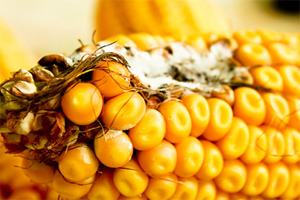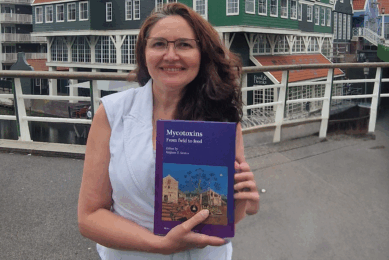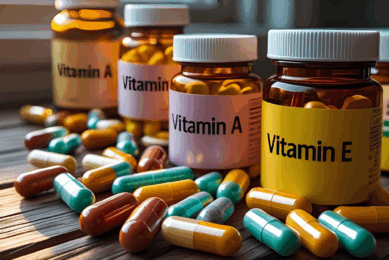Mycotoxin prevention starts with good analysis

To implement preventive (or curative) strategies against mycotoxins, it is important to know how to interpret the test results. In this in-depth article, Erwan Leroux from the French company Neovia explains what to look out for.
In the EU there are recommendations for Deoxynivalenol, Zearalenon, Ochratoxin A, Fumonisins, T-2 and HT-2 toxins. For Aflatoxins and its metabolites the EU have set maximum allowable levels. For raw materials this is 20 ppb (regulation EU 2001-466). Then, according to the sensibility of the species or ages, the levels authorized in complete feed will be between 5 to 20 ppb. Other examples, in USA and Canada the maximum level allowable is 20 ppb in raw material or complete feed ; in South Africa the limits will be between 5 to 50 ppb according to the type of raw materials.
Metabolites from aflatoxins
The aflatoxins family consists of several mycotoxins of which AFB1, AFB2, AFG1, AFG2 and metabolite AFM1 are most known. The most well-known molecule from the aflatoxin family is AFB1, but its metabolite AFM1 is just as dangerous. AFM1 is synthesised from AFB1 (which is found in feed) through hydrolysis in the liver of dairy cows and it can be then excreted in milk. If consumed by humans, it has been proven that milk contaminated with AFM1 lowers immune response and alters nutrient use. It may even induce liver cancer and other hepatic diseases (Liu et al, 2012). Many different regulations are especially dedicated to limit AFM1 contamination in milk in various countries. They generally follow EU (0.05ppb) or US (0.5ppb) rules but can sometimes reach very high levels.
Risk factors
Important risk factors in the field that promote aflatoxin secretion are high temperatures, prolonged drought periods or insect attacks. During storage, aflatoxin production is encouraged by warm, and/or wet conditions. The two aflatoxin-producing molds, Aspergillus flavius and Aspergillus parasiticus especially grow in warm and wet tropical areas, where the temperatures vary between 25 °C and 40 °C and water activity reaches 0.85. The first way to limit AFM1 transfer into milk is to reduce contaminated raw material incorporation into the total mixed ration (TMR). When these contaminated raw materials cannot be totally removed, the use of a mycotoxin binder is then the most reliable and efficient way to control contaminations.
Mycotoxins analysis
Prevention starts with good analysis. But looking for mycotoxins is as difficult as looking for “one second in 32 years”! Indeed mycotoxins are expressed in parts per billion, so called “ppb” (0,000000001), whereas, as a comparison, proteins are expressed in percentage (0.01), and vitamins in parts per thousand (0.001). Even at this low concentration mycotoxins may cause immune suppression and show depressive effects on animal performance, though they are not visible or odourless. This may result from a contamination with various mycotoxins which express toxic synergies. For that reason, methods of analysis must be precise and reliable.
There are different methods to analyse mycotoxins, such as: Strip method, Elisa kit (Enzyme-Linked Immunosorbent Assay kit), High-Performance Liquid Chromatography (HLPC) and Gas Chromatography (GC) that can be coupled with Mass Spectrometry (MS) as detection method. The Elisa method is maybe the most spread all over the world as it can be used by feed millers in their in-house laboratory. Unfortunately, they are only developed for the most prominent mycotoxins (less than 10 mycotoxins analysed) and they generally give a scale of contamination only.
Analysing 43 mycotoxins
After having screened different existing methods, Neovia uses the chromatography method, to be able to detect even low concentrations of the largest spectrum of mycotoxins. With this method 43 mycotoxins and metabolites of mycotoxins are screened. This analysing method is certified by COFRAC (Comité Français d’Accréditation) and can be applied to various raw materials, including silages, complete feed and even blood and organs.
Aflatoxin B1, Ochratoxin A, Fumonisin B1, Zearalenon, Deoxynivalenol, and T-2 toxin, are known to be powerful. However the literature shows that their metabolites or masked mycotoxins that can be even more toxic. Also, more than 400 less well-known mycotoxins can be very toxic for animals. By analysing 43 mycotoxins, which is done by Neovia, the company aims to manage the mycotoxins risk as good as possible. Management also includes recommendations on the storage of raw materials and feed. The diagnosis is individualised and is adapted to the animal species, their age, and health status of the farm











